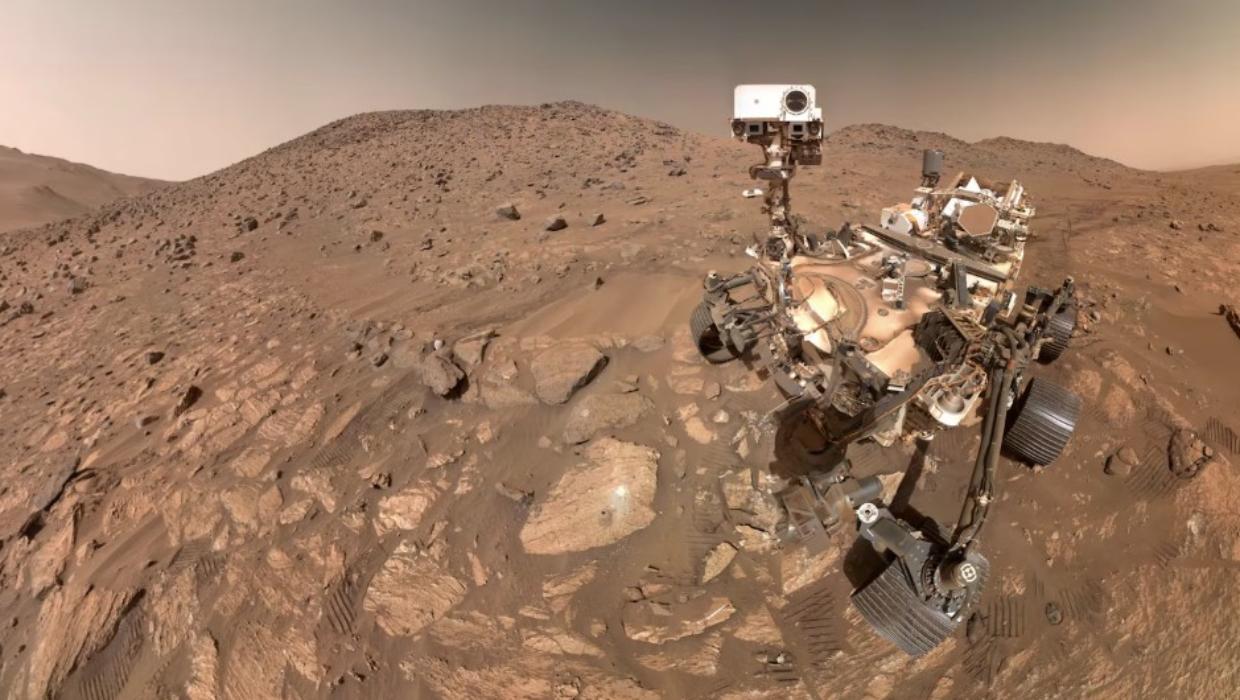Science
NASA’s Perseverance Rover Uncovers Potential Life Sign on Mars

NASA’s Perseverance rover has identified what scientists describe as the “clearest sign of life” discovered on Mars to date. A detailed analysis of images taken by the rover revealed a potential biosignature among speckled rocks located in the Jezero Crater, an area believed to have once housed a lake.
The findings are significant in the ongoing search for evidence of past life on the Red Planet. Researchers focused on specific rock formations that exhibit unusual features, suggesting the presence of ancient microbial life. The analysis was part of the rover’s mission, which began in February 2021, aimed at exploring the crater’s geology and assessing its past habitability.
Insights from the Analysis
The images analyzed show diverse textures and colors, which scientists believe could indicate biological processes. These features, paired with the geological history of the Jezero Crater, provide a compelling case for the possibility of ancient life forms. The rover’s sophisticated instruments have allowed scientists to capture high-resolution images, enabling a thorough investigation of the Martian surface.
According to NASA’s Jet Propulsion Laboratory, the potential biosignature might offer clues about the environmental conditions that existed on Mars billions of years ago. This discovery could reshape our understanding of life beyond Earth and the potential for similar conditions elsewhere in the solar system.
Next Steps for Perseverance
Following this significant finding, NASA plans to conduct further investigations. The rover will continue to collect samples from the crater, which may be returned to Earth by future missions for more detailed analysis. Scientists are eager to explore other locations within Jezero Crater that may harbor additional signs of life.
The mission aims to answer fundamental questions about the history of Mars and whether it could have supported life. As the rover traverses the Martian landscape, each new discovery brings scientists closer to understanding the planet’s enigmatic past.
This recent development marks a milestone in planetary exploration and reinforces the importance of continued investment in space research. As we advance our technological capabilities, the quest to uncover the mysteries of Mars and its potential for supporting life remains a priority for NASA and the global scientific community.
-

 World3 weeks ago
World3 weeks agoPrivate Funeral Held for Dean Field and His Three Children
-

 Top Stories3 weeks ago
Top Stories3 weeks agoFuneral Planned for Field Siblings After Tragic House Fire
-

 Sports3 months ago
Sports3 months agoNetball New Zealand Stands Down Dame Noeline Taurua for Series
-

 Entertainment3 months ago
Entertainment3 months agoTributes Pour In for Lachlan Rofe, Reality Star, Dead at 47
-

 Entertainment2 months ago
Entertainment2 months agoNew ‘Maverick’ Chaser Joins Beat the Chasers Season Finale
-

 Sports3 months ago
Sports3 months agoSilver Ferns Legend Laura Langman Criticizes Team’s Attitude
-

 Sports1 month ago
Sports1 month agoEli Katoa Rushed to Hospital After Sideline Incident During Match
-

 Politics2 months ago
Politics2 months agoNetball NZ Calls for Respect Amid Dame Taurua’s Standoff
-

 World4 weeks ago
World4 weeks agoInvestigation Underway in Tragic Sanson House Fire Involving Family
-

 Top Stories3 weeks ago
Top Stories3 weeks agoShock and Grief Follow Tragic Family Deaths in New Zealand
-

 Entertainment7 days ago
Entertainment7 days agoJacinda Ardern Discusses Popularity Decline on Graham Norton Show
-

 Sports2 weeks ago
Sports2 weeks agoEli Katoa Shares Positive Recovery Update After Brain Surgery





















